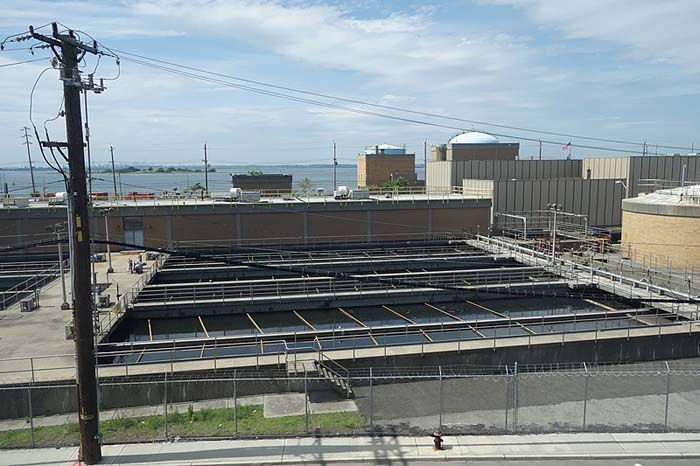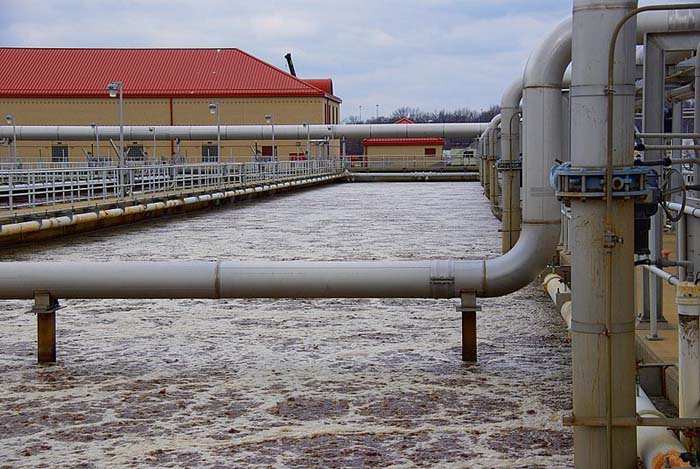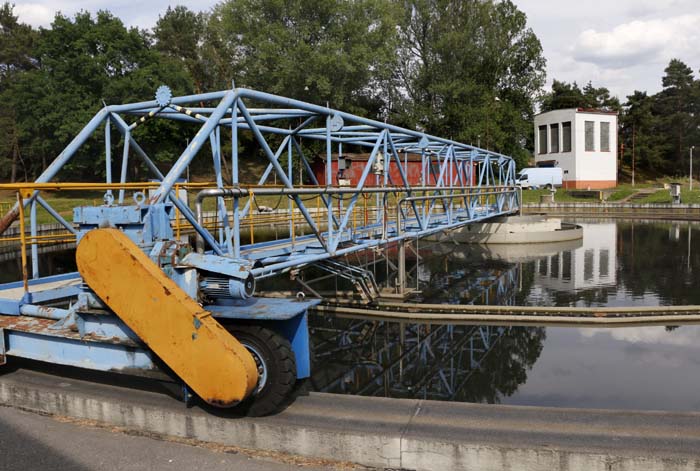
Wastewater treatment is an essential process to keep the environment healthy and ensure that people always have access to clean water. Wastewater treatment has traditionally relied on mechanical filtration and chemical treatments. Nevertheless, these approaches can be quite pricey, demand energy resources, and occasionally damage the environment. Bio enzymes, a more sustainable and effective alternative to traditional wastewater treatment methods, have recently attracted a lot of attention.
Microbes, including fungi and bacteria, are the principal producers of bio enzymes, which are catalysts that occur naturally in living things. These enzymes effectively break down complex organic and inorganic substances in wastewater by accelerating biological reactions without consuming any resources. Reduced operational costs, minimized chemical use, and improved treatment efficiency are just a few of the benefits of using bio enzymes in wastewater treatment.
Mechanism of Bio Enzymes in Wastewater Treatment
Bioenzymes facilitate the breakdown of organic compounds into their parts, making them more accessible to microbes or amenable to more traditional forms of treatment. These enzymes break down large molecules of contaminants such as carbs, grease, fats, and oils into smaller, less dangerous molecules. This method improves both the treated water quality and the overall efficiency of the wastewater treatment system.

What is a biocatalyst in wastewater treatment?
When it comes to treating wastewater, a biocatalyst is a biological agent—usually a microbe or enzyme—that helps to speed up the biochemical reactions that reduce and remove contaminants. These biocatalysts greatly aid in converting contaminants into less inert or harmful forms, detoxifying toxic substances, and decomposing organic matter.
Key Functions of Biocatalysts in Wastewater Treatment
Improvements in Biodegradation:
- Strategies to enhance the activity of biocatalysts include bioaugmentation, which involves adding specific microbial strains, and biostimulation, which involves providing nutrients.
- Improved biodegradation of persistent contaminants is possible with the help of modified enzymes or certain types of microbes.
Detoxification of Dangerous Substances
- These detoxification processes rely on enzymes like reductases and oxidases.
- Biocatalysts can convert harmful substances into less harmful ones. This includes organic pollutants and heavy metals.
Nutrient Removal
- Certain bacteria, for example, are able to change the chemical form of ammonia into nitrate, whereas others are able to change the chemical form of nitrate into nitrogen gas.
- Certain biocatalysts are useful in eliminating surplus nutrients from wastewater, such as phosphorous and nitrogen, to avoid eutrophication in receiving bodies of water.
Organic matter degradation
- These microbes break down organic contaminants by producing enzymes that catalyze certain processes.
- Through metabolic processes, microbes like algae, fungi, and bacteria break down complex organic compounds into simpler molecules.
Types of biocatalysts
- Enzymes:
- Amylases, lipases, and proteases
Decompose starches, fats, and proteins in that order.
- Peroxidases and oxidases:
They play a role in the oxidation-mediated degradation of organic contaminants.
- Microbes:
- Algae
Photobioreactors and algal ponds use them to produce oxygen and remove nutrients.
- Fungi
It easily destroys lignin and other stubborn contaminants and complicated organic compounds.
- Bacteria
Popular applications include biofilm reactors, trickling filters, and activated sludge processes.
- Biofilm Reactors:
- Media are surfaces on which microorganisms grow and eventually form biofilms, which aid in pollutant breakdown.
- Some examples include rotating biological contractors and trickling filters.
- Activated Sludge Process
- Sludge, a byproduct of biomass processing, can undergo further processing or reuse.
- Use of a wide community of microbes to cleanse effluent by degrading organic contaminants.
Applications in Wastewater Treatment
Constructed Wetlands:
- It effectively eradicates pathogens, nutrients, and organic matter.
- Plants, along with the microbes that live in them, are used to naturally clean wastewater.
Anaerobic Digestion:
- Sludge treatment and highly concentrated industrial effluent are two of its most common applications.
- Microorganisms break down organic matter in an oxygen-free environment to produce biogas, a mixture of carbon dioxide and methane.
5 examples of biocatalysts for wastewater treatment
Wastewater treatment relies on biocatalysts. These are microorganisms or enzymes that aid in the breakdown of organic and inorganic impurities. The following five wastewater treatment examples demonstrate the use of biocatalysts:
- Nitrifying Bacteria:
- Source
It is present in both aquatic and soil environments.
- Application
The nitrification process, which involves converting ammonia in wastewater to nitrate, relies on these bacteria. Nitrosomonas oxidize ammonia to nitrite, whereas Nitrobacter converts nitrite to nitrate. If we want to decrease the harmful effects of ammonia in wastewater, we should use this procedure.
- Amylase:
- Source:
Fungi and bacteria.
Application
Other microbes can further break down starches after amylase enzymes convert them to simpler sugars. This technique can greatly benefit wastewater treatment in the food processing industry.
- Lipase:
- Source
Pseudomonas aeruginosa and Candida rugosa are examples of microorganisms.
- Application
Lipase catalyzes the breakdown of fat and oil, producing free fatty acids and glycerol as byproducts. This method is useful for treating wastewater in industries, restaurants, and food processing facilities that produce a lot of fats and oils.
- Protease:
- Source
Bacteria.
- Application
Protein hydrolysis by proteases yields amino acids and peptides. This process benefits sewage effluents from sectors with a high protein content, such as dairy and slaughterhouses.
- Laccase:
Source:
Some fungi and bacteria.
Application
Laccase can effectively break down a variety of contaminants, including phenolic compounds, dyes, and substances that disturb the endocrine system. Because it oxidizes these pollutants, they become less harmful and easier to filter out of wastewater.
These biocatalysts are essential in different parts of the wastewater treatment process. They each help break down and remove certain contaminants in their own special way.
 How do catalysts reduce waste?
How do catalysts reduce waste?
Reduced wastewater treatment waste is mostly attributable to catalysts, which increase the effectiveness of purifying chemical reactions. Catalysts help reduce waste in this environment in a variety of ways:
Incorporation with Membrane Technologies
Including catalysts can enhance the pollutant-removal capabilities of membrane filtration systems. By combining chemical degradation with physical separation, catalytic membranes can filter and degrade pollutants simultaneously, eliminating the need for several treatment processes.
Lower Energy Consumption
Chemical reactions in wastewater treatment, like reduction and oxidation, require a lot of energy. Catalysts lower the activation energy required, allowing these reactions to take place at lower pressures and temperatures. Because of this, the treatment process uses less energy overall.
Advanced Oxidation Processes
Advanced oxidation processes, which rely on catalysts, facilitate the degradation of refractory and complex organic contaminants. Photocatalytic reactions, in which catalysts such as titanium dioxide play a role, can produce reactive species like hydroxyl radicals, which can quickly and thoroughly oxidize pollutants. This results in less secondary waste and cleaner effluents.
Selective Pollutant Degradation
Designing catalysts that target specific pollutants enables the selective breakdown of hazardous compounds without affecting other wastewater components. This targeted strategy will reduce the need for additional treatment stages and the production of secondary contaminants.
Reduced Production of Sludge:
Sludge, a byproduct of conventional wastewater treatment processes, necessitates further processing and eventual disposal. Catalysts can enhance organic matter breakdown, resulting in less sludge production. Reducing sludge volume aids in waste minimization and disposal cost reduction.
Longevity and Reusability
Many catalysts used for wastewater treatment are designed for reuse, ensuring their effectiveness even after multiple treatments. Over time, less energy and materials are required to regenerate or replace catalysts due to their longer lifespan, thereby reducing waste.
Improved Reaction Rates
Catalysts can expedite the chemical reactions necessary to break down contaminants in wastewater. This allows for more efficient and faster reactions, which in turn reduces the energy and time needed to treat the water.
Decreased Chemical Usage
Catalysts improve treatment efficiency, decreasing the amount of extra chemicals needed to purify water to the desired level. Reducing chemical waste has multiple benefits, including lowering the environmental and financial burden of chemical manufacture and disposal.
What is the best pH for bio enzymes?
The optimal pH for bio enzymes is determined by the nature of the treated wastewater, the specific enzymes and microbes used in the treatment process, and other factors. However, generally speaking, a neutral to slightly alkaline pH range, usually between 6.5 and 8.5, is ideal for many bio enzymes utilized in wastewater treatment. The breakdown of organic materials in wastewater relies on microbial activity. Additionally, this range is ideal for their activity and the action of most enzymes.
Keep in mind that various microbes and enzymes may have different optimal pH values. For this reason, it is important to take into account the unique needs of the treatment procedure and modify the pH appropriately. To maximize the efficiency of the wastewater treatment process, close monitoring and maintenance of the pH within the recommended range are required.
The best temperature for enzymes to work
It is important to note that different enzymes and reactions have different ideal temperatures for treating wastewater. There is a typical temperature range in which enzyme activity is at its peak. The optimal temperature range for enzymes used in wastewater treatment is between 30 and 40 degrees Celsius. The composition of the treated wastewater, the enzyme’s intended function, and its place of origin can all have an impact.
Due to their sensitivity, temperature fluctuations can denature or reduce the activity of enzymes. To get the most out of wastewater treatment techniques that use bio enzymes, it’s important to keep the temperature just right.
Interactions between temperature effects and other factors, such as substrate concentration, pH, and the presence of activators or inhibitors, can also have an impact on enzyme activity. So, when planning wastewater treatment systems that use enzymes, you really must take all of these things into account.
Conclusion
Bio enzymes have the potential to revolutionize wastewater treatment by making it more efficient and environmentally friendly. Enzymes, which have inherent catalytic capabilities, can tackle the increasing difficulties of wastewater treatment sustainably and economically. Bio enzymes are increasingly finding their way into various applications. This bodes well for the future of environmental protection and resource conservation initiatives around the world.
